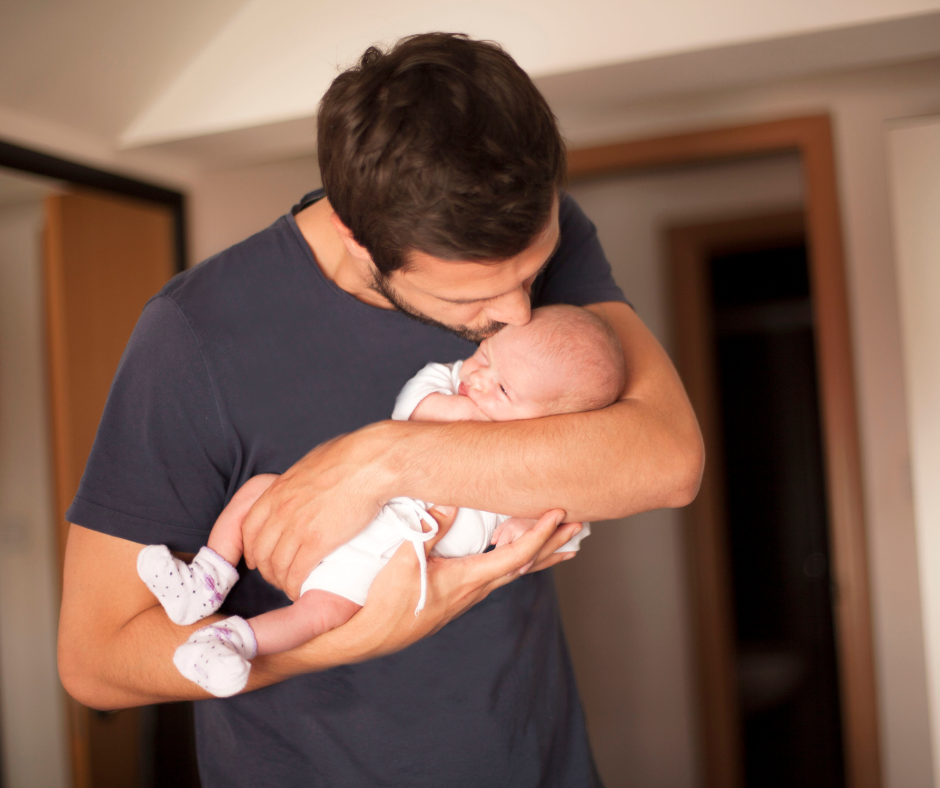The first year of your little one’s life is full of new developments and excitement. It can be challenging to adjust to all the changes, especially those concerning sleep. One of the most significant milestones in baby sleep development is when your little one can safely sleep on their stomach. This can be a scary milestone, as we often wonder, “can babies sleep on their stomachs?”—the answer to this question needs to be decided on a case-by-case basis.
Read on to learn when babies can sleep on their stomachs and how to tell if your little one is ready for this stage in sleep development!

When Can Babies Sleep on Their Stomach?
6-Month-Old Sleeping on Stomach
As your little one grows, they naturally become more curious and gain the ability to crawl, roll, wiggle, and squirm. These developments are exciting for parents to witness, but their newfound mobility can be a concern for safe sleeping practices.
You may have heard that stomach sleeping can be risky for newborns. But you don’t need to adjust Baby’s position if they roll onto their tummy after they reach 4-6 months. This is the time when they are old enough to freely roll forward and back. And experts agree that it’s generally safe for Baby to sleep on their stomachs as long as they can get there themself.
But still, to be extra careful, don’t leave Baby around this age sleeping on their tummy alone. All you need to do is ensure you begin each night with Baby sleeping safely on their back and remove any dangerous objects such as blankets or other loose items. Then, allow your little one to develop at their own pace and roll onto their tummy if it naturally occurs.
Baby Tummy Sleeping: The 1-year Mark
Typically, a baby begins to roll onto their tummy during sleep as they approach the 1-year mark. This is a safe and normal development for your little one. As we discussed earlier, your baby will grow and develop the strength to roll onto their tummy. Also, with growing strength in their arms, back, and neck, they’ll develop instincts for self-protection. This means that your little one will become stronger, more independent, and able to roll over onto their back when necessary.
Rolling over is a major milestone for Baby. Be sure to keep an eye on all those exciting moves even as they reach the 1-year mark. It’s okay to let your little one toss and turn during the night, but it’s essential to begin each night’s sleep on their back in case of a fall or other sleep risks.

Is It Safe for Babies to Sleep on Their Stomach?
Official Sleep Recommendations by the AAP
Official sleep recommendations by the AAP include the top 19 principles to reduce the risk of SIDS and other sleep-related infant death. Each principle is essential and should be thoroughly reviewed by all new parents to ensure you practice safe sleeping techniques and protect the health and well-being of your little one.
Some of the key points include:
· Place your baby on a flat, firm surface
· Always put your baby to sleep on their back
· Ensure the crib does not contain any blankets or soft, loose objects
· Sleep with your baby in the same room, not a shared bed.
The first and perhaps the most crucial principle listed in the AAP guidance is “back to sleep for every sleep.” This principle declares that to reduce the risk of SIDS, infants should be put to sleep on their backs until they reach the age of one. Side sleeping is not safe for infants of 1 year old and below, as they can roll onto their stomachs without the strength to roll back, so it’s essential to put this first principle into practice.
Tummy Sleeping May Increase the Risk of SIDS
Sudden infant death syndrome (SIDS) refers to the sudden, unexpected, and unexplained death of an apparently healthy baby. It’s one of the leading causes of death in infants within the first year of their life. As the AAP guideline points out, young babies (under 1-year-old) who sleep on their backs are less likely to experience SIDS than babies who sleep on their stomachs or sides. And whether tummy-sleep or not, there should never be blankets, pillows, or stuffed toys in your baby’s bed. Otherwise, if Baby rolls into any of these items, they could block their airflow.
That being said, parents and caregivers can re-evaluate these principles once Baby hits 4-6 months. While it’s suggested that you should place Baby to sleep on their back, you don’t need to keep turning them around if they’re comfortable rolling both ways (back to tummy, tummy to back). Because as we’re about to find out, awake or asleep tummy time can be beneficial to Baby’s growth and development.

Potential Benefits of Baby Tummy Sleeping
Despite the SIDS scare, if your little one has reached the stage where they roll over and sleep on their tummy during the night, this is an excellent development with ample benefits. Your little one will be sleeping on their tummy because it’s the most comfortable position for them.
Therefore, make sure to let them toss and turn to their heart’s desire without interruption when they’ve reached the right developmental stage. Allowing your baby to do this can result in longer sleep cycles and higher quality sleep for your child. Just make sure that you follow the tips we explored earlier to create a hazard-free, safe sleeping environment.
Can Babies Sleep on Their Stomach on Your Chest?
As a loving parent, you will embrace every moment of intimate connection you have with your child. One of the most common bonding methods is allowing your baby to sleep on their stomach on your chest. While this is a loving moment that you should enjoy, you must remain awake and alert when this happens. If you fall asleep with your little one on your chest, it can be hazardous for your baby’s health and drastically increase the risk of SIDS. Stay awake and embrace this tender moment while caring for your child.

What to Do When Baby Keeps Rolling onto Tummy?
You may wonder what to do if your baby rolls onto their tummy during the night. If your little one rolls onto their tummy, there is typically no need for concern. However, you must ensure that they begin the night on their back.
What If Babies Roll Onto Their Stomach to Sleep Before They Turn One ?
All in all, when Baby begins to roll over onto their stomach, you must ensure that there are no hazardous objects such as blankets or soft toys in the crib. This usually happens when they reach 4-6 month-old. Under proper supervision, you can be confident that your little one has developed the strength and awareness to tummy sleep safely.
Follow the safety tips we explored earlier and once Baby turns 1, you can freely allow them to sleep on their tummy! To learn more about tummy sleeping before 1 year old, have a look at our guide What Do I Do If My Baby is a Tummy Sleeper?
It’s common for your baby to begin tummy sleeping at any time from 4 months to 1 year old. However, it’s crucial to follow the APA guidelines to reduce the risk of SIDS.
For extra care, check out the CuboAi Smart Baby Monitor to watch your little one throughout the night. Not only can you watch your baby throughout the night, but this intelligent monitor will also alert you that your baby’s face is covered so that you can check on them if they happen to roll onto their tummy at a young age.